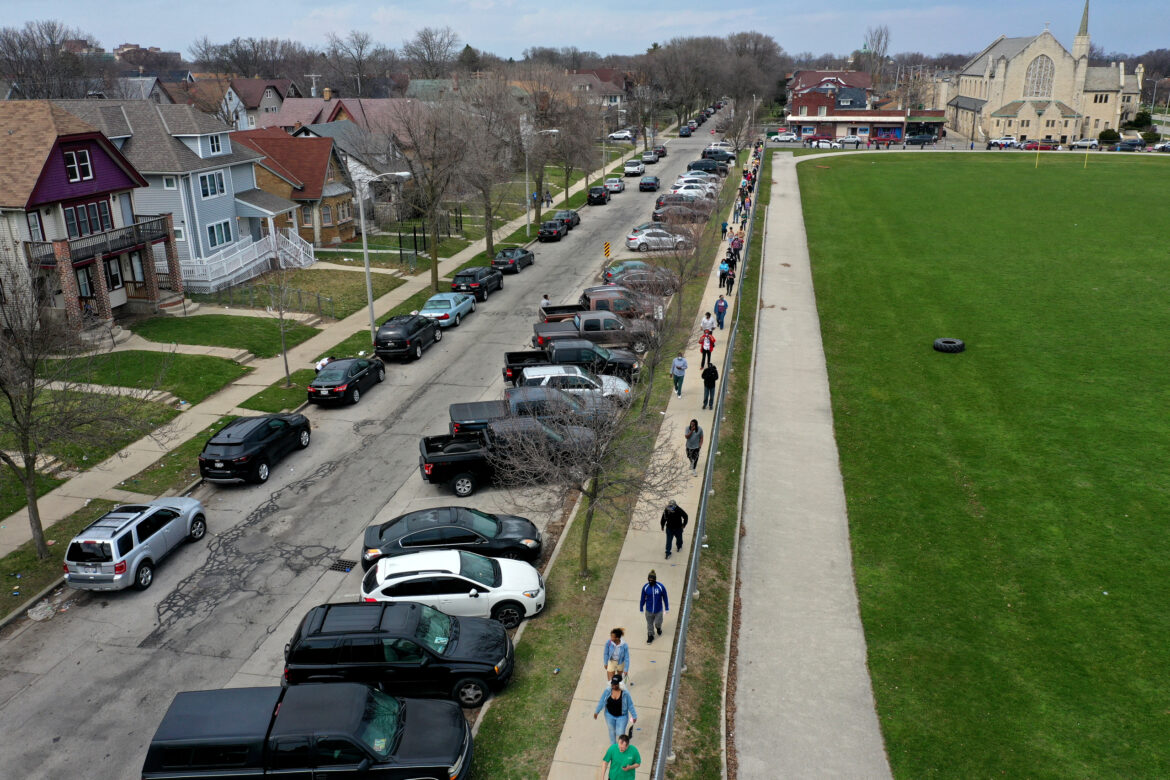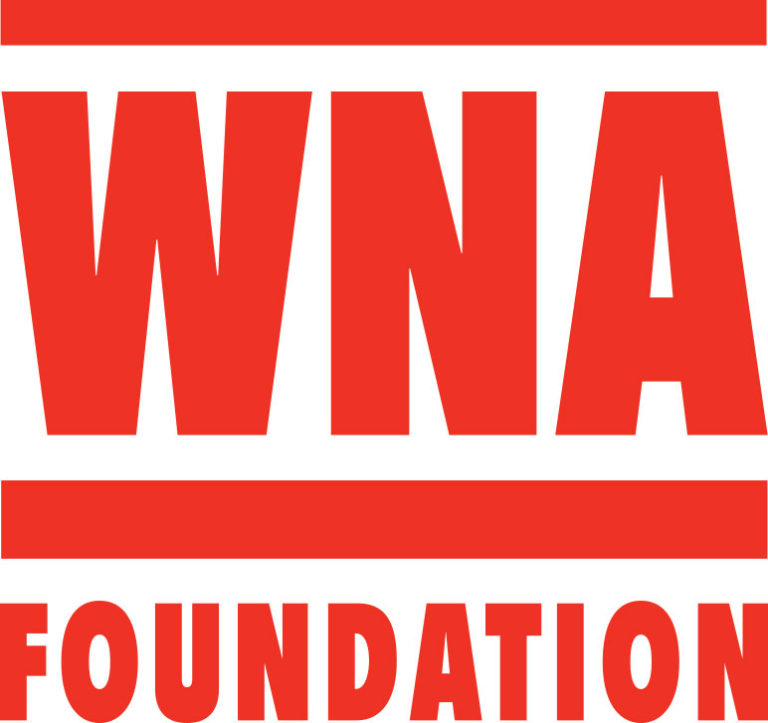By Nora Eckert, Wisconsin Watch
This article is made possible through Votebeat, a nonpartisan reporting project covering local election integrity and voting access.
After a chaotic April primary in which just five voting places were open in Milwaukee, and voters waited for hours in long lines, the city is operating nearly all of its available locations for the upcoming presidential election, mirroring an increase in polling sites statewide.

Thanks to an influx of poll workers and efforts by the city’s election commission, 173 out of 180 available polling places will be open for voters on Nov. 3. Statewide, about 50 communities are still short about 180 poll workers, of approximately 30,000 needed.
“The city of Milwaukee was really the poster child for what a complete disaster it was on April 7, and we have a lot of trust to build back,” said Claire Woodall-Vogg, executive director of the Milwaukee Election Commission.
This article is available for reprint under the terms of Votebeat’s republishing policy.
- Download this story as a Word document
- Download the photos that accompany this story
- View the original story at WisconsinWatch.org
Election Day operations in the city will be managed by a crew of 3,400 poll workers, 1,000 more than in the 2016 presidential election, Woodall-Vogg said. The extra helpers are needed to enforce social distancing among voters, sanitize voting stations and fill in for poll workers who drop out closer to Election Day, she said.
This year, there is about a 5% reduction in polling places in Wisconsin compared to 2016, according to an analysis from the Center for Public Integrity. Municipalities may have decided to shut down locations that are too small to accommodate social distancing requirements or which house vulnerable populations, such as nursing homes, said Reid Magney, spokesman for the Wisconsin Elections Commission.
CPI found that Brown, Kenosha, Rock and Waukesha counties have seen some of the largest decreases in polling places compared to 2016. In Brown County, the number of polling places decreased from 75 to 52, a 31% drop. Kenosha’s dropped 38%, Rock dropped 19% and Waukesha dropped 17%.
It’s essential to open up enough polling places to reduce congestion and improve voter safety, Woodall-Vogg said, adding that the location of these places is paramount. When she was appointed to lead the Milwaukee commission in July, she focused on a neighborhood-based model of locating polling places, rather than centralized sites for voting.
Woodall-Vogg said the number and location of polling places is a question of equity, adding that large, centralized voting centers can increase congestion and may not be familiar to voters. “I believe going to a voter center model would have ultimately disenfranchised voters who don’t have transportation, who aren’t comfortable and don’t have the means to get to a voting center,” she said.
Convenient polling locations can potentially augment voter turnout. A study by the Brennan Center for Justice found that the reduction in polling places during the April primary cut turnout by almost 9 percentage points in Milwaukee. Researchers found the decrease in polling places especially lowered turnout of Black voters. Fear of contracting COVID-19 further depressed voting, the center’s study found.
While some cities such as Milwaukee are maintaining most of their polling locations, others are struggling to recruit the necessary number of poll workers. In Cudahy, Wisconsin, voters will all have to cast their ballots at the local high school’s auxiliary gym, instead of the four locations available in 2016.
Diana Zielinski, who has lived in Cudahy for more than 30 years, learned of the reduction when a friend sent her an Oct. 12 post on the city’s Facebook page.
“I think it is a form of voter suppression. I really do,” said Zielinski, who already has submitted her absentee ballot, but worries about how the move will affect her neighbors in the city of about 18,000 south of Milwaukee.
Officials say they were forced to make these cuts because of an insufficient number of poll workers.
“This is not a decision that we wanted to make. It’s something that we have to do so that we can run this election with the integrity that is required,” said Cudahy’s Deputy Clerk Kelly Sobieski, noting that 57 of the approximately 80 poll workers needed have signed up for Election Day. She added that it’s typical many of those will drop out in the coming weeks.
This reduction in poll workers in the week before the election is quite common, and is expected to be even more pronounced during the pandemic, said Wendy Helgeson, president of the Wisconsin Municipal Clerks Association.
In her Greenville, Wisconsin, community, where she serves as clerk, the municipality has accepted as many poll workers as possible to staff its two voting locations, keeping in mind how quickly things can change in the week before the election.
“As we’ve seen through the prior two elections, that every day is different, right? We could be fine. We could have plenty of people,” Helgeson said. “But there could be an outbreak or someone becomes ill or has symptoms, and then they’re not able to work that day.”
In August, the National Guard helped fill the gaps in 141 municipalities that were short on poll workers, the Wisconsin Elections Commission said. Gov. Tony Evers has said that he will activate plainclothes guard members as needed for the Nov. 3. election.
Early in-person voting in the state started Tuesday and ends in some municipalities on Oct. 30, and Nov. 1 in others. Milwaukee has 14 early voting sites, up from three in 2016, according to Woodall-Vogg. Madison has 14 and Racine has 10. Kenosha and Green Bay have one site each.
For communities concerned about staffing their polling places, the high number of absentee voters is some comfort. But Magney said it’s difficult to determine just how much that will affect in-person turnout on Election Day.
Of the nearly 1.5 million absentee ballots that have been shipped to voters across the state, about 69% have been returned, meaning voters may still show up on Election Day to cast their ballot in person if they haven’t already mailed it in or dropped it off.
This article is available for reprint under the terms of Votebeat’s republishing policy. The nonprofit Wisconsin Watch (wisconsinwatch.org) collaborates with WPR, PBS Wisconsin, other news media and the University of Wisconsin-Madison School of Journalism and Mass Communication. All works created, published, posted or disseminated by Wisconsin Watch do not necessarily reflect the views or opinions of UW-Madison or any of its affiliates.
Nora Eckert joined the Center in October 2020 as a reporter for Wisconsin Watch’s Votebeat project — a pop-up nonprofit newsroom covering local election administration and voting in six states, created by Chalkbeat. She holds a master’s degree in journalism from the University of Maryland and undergraduate degree from St. Norbert College in De Pere, Wis. She previously worked with NPR, The Associated Press and The Wall Street Journal. She’s reported on national investigations into jail suicides, how climate change disproportionately affects the urban poor, the spread of coronavirus in nursing homes and the race for artificial blood. While reporting in Washington, she covered the impeachment hearings of President Donald Trump and funeral of Rep. Elijah Cummings. Before diving into the journalism world, she worked as a marketing and communications specialist at a Minnesota biotech company.



